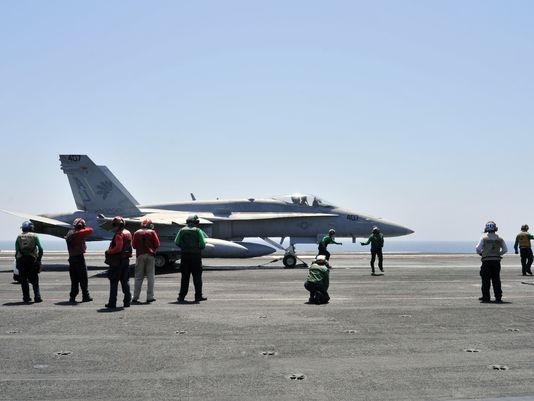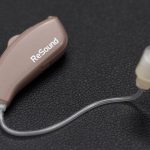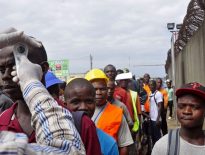U.S. forces in Iraq remain committed to using airstrikes to help refugees, though any attempts to seriously blunt the advance of the Islamic State would require more ground resources, a senior officer involved in the air effort told USA TODAY.
Those ground forces would include special operators capable of getting closer to Islamic State positions and directing the airstrikes in cooperation with Iraqi ground troops, such as Kurdish peshmerga, said the officer, who spoke on condition of anonymity because officials were not authorized to speak publicly.
However, there are no plans to expand the air campaign, said Lt. Gen. William Mayville, the director of operations for the Joint Chiefs of Staff. We are gripped by the immediacy of the crisis, and our focus right now is to provide immediate relief to those who are suffering, he said.
During a news conference Monday, Mayville said any thought of using U.S. ground troops is a little too speculative for me. There are no current plans to use U.S. ground troops, he said.
President Obama announced Thursday that the United States would start air operations in Iraq. Subsequent comments from him and administration officials made the distinction between ground and combat troops.
Iraqi Prime Minister-designate Haider al-IbadiObama reiterated Monday that any solution to the problems in Iraq would not be accomplished by U.S. military force. He said that he and Vice President Biden both phoned Haider-al-Ibadi.
U.S. teams in Baghdad and Irbil are working with the Iraqi military, said an administration official. We have said that we are going to direct additional resources to both the Iraqi Security Forces and to the peshmerga. And we’ve also made clear that after the Iraqis form a government, we stand prepared to work with other partners in the region in providing additional support — for instance, additional resources and equipment to the Iraqis as they go on the offensive.
The official spoke on condition of anonymity because they were not authorized to speak on the record about U.S. military plans.
The military officer’s assessment about the need for forward air observers makes sense, said Michael O’Hanlon, a military analyst at the Brookings Institution.
Stopping the group’s infiltration into Kurd-controlled areas is the relatively easier task, O’Hanlon said. Pushing the Islamic State from cities it controls, such as Mosul, will require working closer with the Iraqi military. Before that can happen, Iraq must form a more inclusive, effective government.
Rolling back the Islamic State could require up to 15,000 U.S. troops, said retired Army colonel Peter Mansoor, the executive officer to Gen. David Petraeus during the 2007 surge in Iraq and now a professor of military history at Ohio State University.
You can’t just snap your fingers and make it go away, Mansoor said.
The geography in the region is well suited to U.S. air power. The desert area surrounding the 4,000-foot ridgeline is open territory, and hostile Islamic State ISIL forces are relatively easy to spot and kill, the officer said. Meantime, the cracks and crevices of the mountain provide adequate cover for the refugees.
The Pentagon is relying on F/A-18 warplanes for the bombing runs from the USS George H.W. Bush because it operates in international waters, the officer said. Land-based attack aircraft require the permission of the host country if they are to be used in combat, and the green light for those operations can be difficult to obtain.
Predator drones are also being used to fire Hellfire missiles at Islamic State targets. Iraq has allowed drones and other surveillance aircraft to be used from bases there.
There are about 650 troops on the ground in Iraq now. They are protecting the Baghdad airport and the U.S. Embassy there and training Iraqi special forces.
Obama ordered airstrikes when it became apparent that Islamic State rebels were advancing on Irbil, where there is a U.S. Consulate and American personnel. The strikes are intended to protect religious minorities holed up on the mountain and threatened by the Islamic State.
Getting food, water and supplies to the refugees by air, on a craggy mountain, has required sophisticated parachute operations by Air Force C-17 and C-130 cargo planes, the officer said.
Contributing: Jarrad Saffren and Andrew Tilghman of Military Times






